Pirelli Motorcycle Tires: Everything You Need To Know

A brief history of Italys premier tire manufacturer.
Founded in 1872 by Giovanni Battista Pirelli, the company we now know for its expansive range of tires got its humble beginnings in a different industry: telecomms. Back then several new technologies and industries were emerging, including energy and telecommunications. Throughout Europe, kilometers upon kilometers of power cables and phone lines were being put into the ground and into the ocean. All of them needed protection. Enter Pirelli and his expertise in another emerging field: rubber. Pirelli founded a limited partnership, “G.B. Pirelli & C.”, in Milan to produce elastic rubber items – primarily sheathing to protect all these wires buried in the ground. According to Pirelli’s corporate history website, by 1873, only a year after its foundation, Pirelli already had a plant in Milan. Production of carriage bands (they weren’t exactly tires) started in 1885, and by 1894 the first velocipede tire was born.
Over the course of the next 50 years, Pirelli grew quickly, opening plants all across the globe while also participating in motorsports both on two wheels and four. By the 1920s, a reorganization of the Pirelli group resulted in the Società Italiana Pirelli, the first Italian group traded on the New York Stock Exchange. Little did anyone know that the Great Depression was looming around the bend…
Through it all, Pirelli diversified its reach immensely. From clothing to sanitary products, if something could be made from rubber, Pirelli was finding a way to be a part of that industry. As far as tires were concerned, the automotive sector dominated the company’s focus, with 1949 marking the start of the company’s involvement developing its first radial car tire, the Cinturato. You’d have to fast-forward to the 1980s before Pirelli developed a radial motorcycle tire, and even then, it was developed for a single model – the 1983 Honda VF1000R.
Pirelli really took a turn in the new millennium, as it integrated its MIRS (Modular Integrated Robotized System) technology in 2001 which substantially changed Pirelli’s tire building process. In 2003, the CCM-based (Continuous Compound Mixing) technology room was introduced to test new mixes and materials.
During this time, Pirelli was still competing in racing. But 2004 marked another turning point, as it became the sole tire supplier to the World Superbike Championship – a partnership that continues to this day. Not long after that, the British Superbike Championship – arguably the top domestic championship in the world – also signed Pirelli as its spec tire supplier.
With data from two top-level championships to lean on, plus Pirelli-sponsored riders throughout the world, the biggest benefactor has been the general consumer, as Pirelli’s road bike offerings have advanced leaps and bounds in the past 20 years. From a business standpoint, further commitment to tire manufacturing and development instigated the process of selling off its other commercial holdings, including its stakes in telecommunications – the very foundation Giovanni Battista Pirelli started the company on. Finally, in 2010, Pirelli liquidated its last remaining outside entities, enabling it to focus solely on tires.
Today, road-going motorcyclists enjoy three distinct categories of Pirelli tire: Diablo, Angel, and Scorpion (Pirelli is no stranger to motocross either, but that’s a story for another time). Diablo is the family of tires for sport, track, and race use. Angel is the family of touring tires, and Scorpion encompasses Pirelli’s adventure and scrambler lineup for bikes that go on road and off. All three of these families benefit from the lessons learned in racing, as well as the advances in manufacturing and technology Pirelli has dedicated itself to.
Table of Contents
Diablo Rosso IV
The latest in Pirelli’s street-focused side of the sporty tire range, the Diablo Rosso IV was just introduced in February 2021. As such, as of this writing, your esteemed Motorcycle.com staff have not had a chance to try the tire ourselves. However, a set is currently being sent to us to remedy this situation (and we’ll update accordingly).
Nonetheless, the Diablo Rosso family (versions 1 through 3) have been proven performers for spirited street riders. In the case of the Diablo Rosso IV, emphasis has been placed on braking performance, acceleration grip, quick handling, and both wet and dry performance for bikes with a wide range of power figures, from entry-level bikes to 200 horsepower beasts. How is this done? Here’s a quick dive.
The front tire is divided into three areas using two different compounds. The center is a harder compound for durability and composure under braking. Its high silica content allows it to get up to temperature quickly while also giving it good wet performance. The sides are made up of a softer compound for better cornering grip, also with a high silica count for fast warm-up times.
For the rear tire, there are two different solutions depending on the motorcycle’s weight and power. For sizes up to 190/50-17, the tire is split into three zones, similar to the front tire. A harder compound is in the middle with a softer one on the sides, though the exact chemistry and distribution of the silica and other chemicals is different from the front.
Starting with the 190/50-17 size, the tire is split into five zones using three different compounds. The center compound is high in silica and a harder compound. The intermediate compound is also a full silica compound for fast warm-up and confidence to lean moderate amounts quickly. The very edges are carbon black in a similar compound to the Supercorsa SC endurance racing tire for optimum cornering grip for high horsepower bikes.
All this and we haven’t even begun to talk about profiles and tread pattern. Both of these will be similar among the Diablo line, with a responsive yet neutral profile adapted from the requests of Pirelli’s race teams. Pirelli’s signature “flash” makes up the tread pattern, and different tweaks to it will be found on all the Diablo tires. Pirelli says this pattern helps promote better wear uniformity while also evacuating water well.
Diablo Rosso Corsa II
Moving more towards the sporty end of the Diablo family, the Diablo Rosso Corsa II has been a solid street/track tire for as long as we can remember. In fact, Johnny Burns had nice things to say about it in his review. To quote him, quoting Pirelli:
This one “is intended for riders of mid-high performance motorcycles who enjoy a sports riding style on the street and not just on the racetrack. They desire a tire with fast warm-up, sports agility, excellent grip and consistent performance ready to compete against the challenges of everyday use. Pirelli have now transformed racetrack performance into street versatility to guarantee top performance also on road.”
Like the Rosso IV (no Corsa), the front tire is split into three zones while the rear is divvied into five. The front features a full silica center compound while the rear’s center compound is 70% silica. The rear’s shoulders are full silica, then both front and rear use full carbon black compounds at the edges for optimum grip.
Diablo Supercorsa SP V3
A direct descendant of the Supercorsa SC tires used in racing championships all over the world, the Supercorsa SP version is a street tire that can very easily be ridden hard on the racetrack with even today’s most powerful sportbikes. Guest tester, Isle of Man racer, and all around good (and fast!) guy Mark Miller proves my point when he got to try the tires aboard the latest superbikes.
As far as specifics go, the profile has been revised yet again over V2 based on feedback from World Superbike riders. Pirelli says this improves agility and gives the rider more feel while leaned over. A new compound is being used for the dual compound rear tire for better warm-up times and more consistent grip and feel at maximum lean angles. Lastly, a tweak of the tread design helps give the tire better uniformity as it wears.
Having personally used this tire on several occasions, with and without tire warmers, I can attest to its excellent performance, capable of handling everything all but the fastest of riders can throw at it.
Angel GT II
Pirelli’s premier sport-touring tire, the Angel GT focuses on mileage and wet weather performance, especially on today’s sport-touring machines. With a secondary aim of making a tire with neutral handling characteristics, Pirelli focused on the carcass structure to help achieve these goals. As is common with S-T tires, there’s a high silica content in the compounds both front and rear. This not only helps the tire get to temp quickly, but also gives it a good amount of grip in wet conditions.
As you can see from the tread design, getting rid of water is a high priority. But Pirelli also says the structure also helps keep consistent contact pressure for more even wear and better mileage. The original Angel tire, the Angel ST, had a similar tread pattern, with a more pronounced image of a devil in the center. After a certain amount of miles, the devil would turn into an angel. Or maybe it was the other way around. Whatever it was, it was incredibly weird. Thankfully, it’s still an excellent sport-tourer.
Scorpion Rally STR
Moving to the adventure side and we have the Scorpion Rally STR. The knobby bias makes it clear this is a tire that prefers being off-road. However, it still delivers impressive road performance too. You can tell by looking at the rounded profile that the Scorpion Rally STR borrows from the road division. But its high silica content makes it well suited for pavement duties, even in cold weather. If you’re worried about the knobs tearing, the wide surface area of the knobs helps to dissipate heat more evenly, helping them last longer.
Get off into the dirt and the knobbies will be in their element. The long, wide blocks may not give motocross levels of grip off-road, but they’re chunky and still well able to bite into the ground. Big adventure bike riders should be satisfied with the Scorpion Rally STR.
Pirelli FAQ
Are Pirelli motorcycle tires good?
You don’t remain in business for nearly 150 years by accident. Pirelli is known all over the world for its excellent tires in a variety of different riding categories. This is a result of its constant research, development, and involvement in motorsports. The lessons learned in racing ultimately get transferred back to the products you and I can buy at our local store.
Is Pirelli better than Michelin?
When it comes to high-profile brands like Pirelli, Michelin, and others, one isn’t necessarily better than another. It really is true that these well-known brands all produce great products. But each company may have specific characteristics they impart into their tires that may or may not work well with your riding style.
How long do Pirelli motorcycle tires last?
The lifespan of any tire depends on a number of factors – type of tire, type of riding, riding conditions, type of motorcycle, etc. Tires meant for competition will clearly have a shorter lifespan than touring tires, but the competition tires will have more outright grip. Within their specific categories, Pirelli tires are known to last a similar amount of miles as others in the category. But again, it’s nearly impossible to get into specifics about how long a tire will last.
Additional Resources
Riding The Pirelli Diablo Supercorsa Tire Range
MO Tested: Pirelli Supercorsa TD Review
Pirelli Diablo Rosso Corsa Review
Pirelli Diablo Rosso II Review
We are committed to finding, researching, and recommending the best products. We earn commissions from purchases you make using the retail links in our product reviews. Learn more about how this works.
Become a Motorcycle.com insider. Get the latest motorcycle news first by subscribing to our newsletter here.

Troy's been riding motorcycles and writing about them since 2006, getting his start at Rider Magazine. From there, he moved to Sport Rider Magazine before finally landing at Motorcycle.com in 2011. A lifelong gearhead who didn't fully immerse himself in motorcycles until his teenage years, Troy's interests have always been in technology, performance, and going fast. Naturally, racing was the perfect avenue to combine all three. Troy has been racing nearly as long as he's been riding and has competed at the AMA national level. He's also won multiple club races throughout the country, culminating in a Utah Sport Bike Association championship in 2011. He has been invited as a guest instructor for the Yamaha Champions Riding School, and when he's not out riding, he's either wrenching on bikes or watching MotoGP.
More by Troy Siahaan




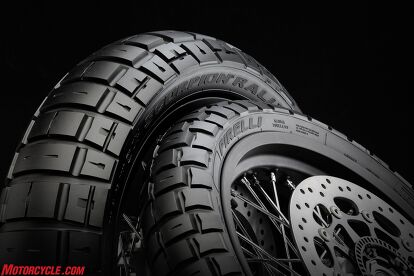





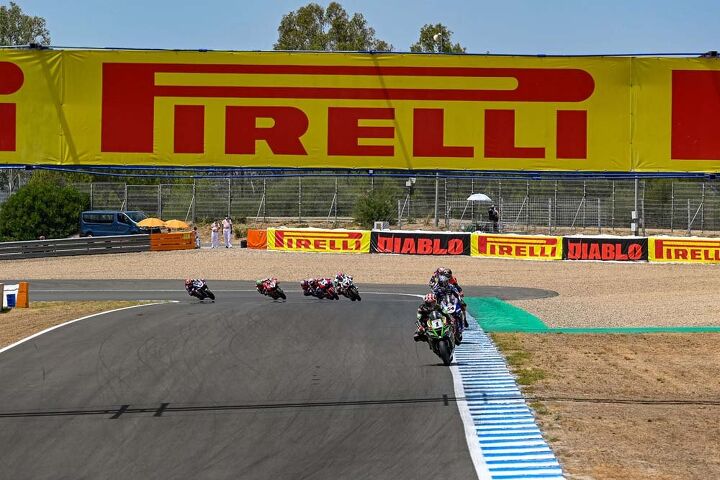

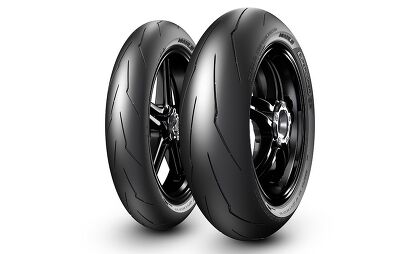








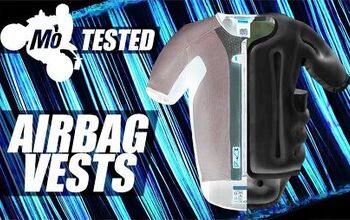



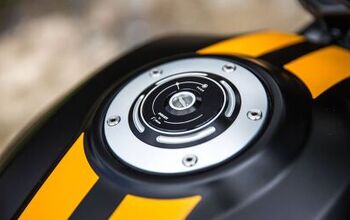
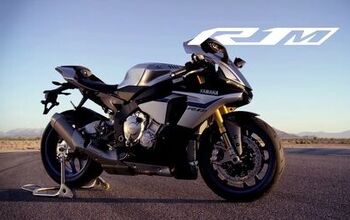











Comments
Join the conversation
I loved the Supercorsas that came with my Triumph, but $400+ a set and 1000 miles until the shoulders were toast front and rear. I went to Q4 and saved 100$ without losing any perceivable performance. And now I get 1500 miles to a rear and 2500 on the front.
wow, did someone get some Pirelli sponsorship?